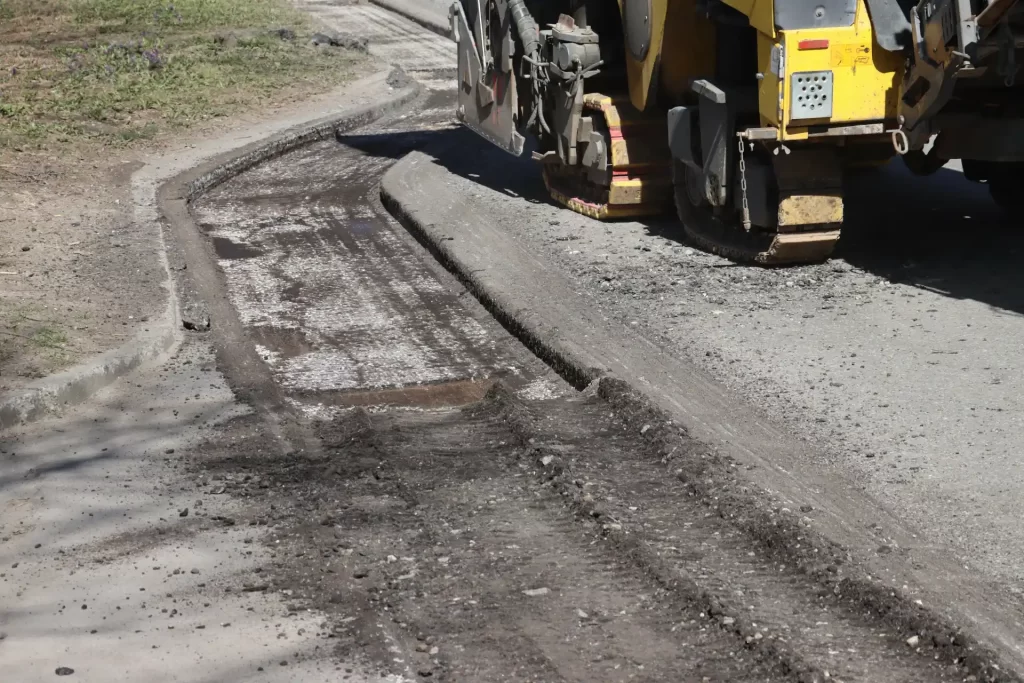Choosing the right material for your driveway is not just about aesthetics and cost. With growing environmental concerns, understanding the ecological footprint of your options is crucial. In this blog, we’ll compare the environmental impact of asphalt and concrete driveways, helping you make an informed decision that aligns with your green values.
Production and Raw Materials
Asphalt:
Asphalt is primarily made from bitumen, a byproduct of petroleum refining, and aggregates like sand, gravel, and crushed stone. The extraction and refinement of petroleum are energy-intensive processes that contribute to greenhouse gas emissions. However, asphalt production has become more sustainable with the increased use of recycled materials. Reclaimed asphalt pavement (RAP) is commonly incorporated into new asphalt mixtures, reducing the need for virgin materials and lowering the environmental impact.
Concrete:
Concrete is composed of cement, water, and aggregates. The production of cement is a major source of carbon dioxide (CO2) emissions, accounting for about 8% of global emissions. The energy required to heat limestone and clay in cement kilns is substantial, and the chemical reactions involved release significant CO2. While concrete can incorporate recycled materials like fly ash or slag, the overall environmental burden from cement production remains high.
To explore more about why many homeowners choose asphalt over concrete for various reasons beyond environmental impact, check out our blog on Why Choose Asphalt Over Concrete for Your Driveway?
Installation and Energy Consumption
Asphalt:
The installation process for asphalt involves heating the material to a high temperature, which requires considerable energy. However, asphalt driveways can be laid quickly, reducing the duration of machinery operation and associated emissions. Additionally, newer technologies like warm-mix asphalt reduce the required temperature, thus cutting down on energy consumption and emissions.
Concrete:
Concrete driveways are installed by pouring and curing the material, which can take several days. This prolonged process often involves the continuous use of machinery, contributing to higher energy use and emissions. However, once set, concrete driveways typically require less maintenance than asphalt, potentially offsetting some of the initial environmental costs over the long term.
Longevity and Maintenance
Asphalt:
Asphalt driveways have a lifespan of about 20-30 years, depending on the climate and maintenance practices. Regular maintenance, such as sealcoating and crack filling, is necessary to prolong its life. While maintenance activities do have an environmental impact, advances in sustainable practices and materials are helping to mitigate these effects.
Concrete:
Concrete driveways typically last 30-40 years with minimal maintenance. Their durability reduces the frequency of repairs and resurfacing, which can be environmentally beneficial. However, when concrete does need to be replaced, the process is more energy-intensive and generates more waste compared to asphalt.
For insights into how the asphalt industry is evolving with a focus on sustainability, read our blog on Future Trends in Asphalt Milling: Technology and Sustainability.
Heat Island Effect
Asphalt:
Asphalt’s dark color absorbs more heat from the sun, contributing to the urban heat island effect, which can increase local temperatures. However, cool pavement technologies are being developed to produce asphalt with reflective properties that mitigate this issue.
Concrete:
Concrete, with its lighter color, reflects more sunlight and absorbs less heat, reducing the heat island effect. This characteristic makes concrete a more environmentally friendly choice in hot climates where reducing heat absorption is crucial.
Water Runoff and Permeability
Asphalt:
Traditional asphalt is impermeable, leading to water runoff that can carry pollutants into waterways. However, permeable asphalt options are available, allowing water to seep through and reducing runoff and pollution.
Concrete:
Concrete is also typically impermeable, but permeable concrete options exist, promoting better water management and reducing runoff. The choice between permeable and traditional options can significantly impact the environmental footprint of your driveway.
Conclusion
When choosing between asphalt and concrete driveways, consider the entire lifecycle of the materials—from production to disposal. While both materials have environmental impacts, advances in technology and sustainable practices are helping to reduce these footprints. Asphalt offers advantages in terms of recycling and newer, eco-friendly installation methods, whereas concrete’s durability and reduced maintenance needs present significant benefits.
Ultimately, the best choice depends on your specific circumstances, including climate, budget, and personal environmental priorities. For a deeper dive into the benefits of asphalt driveways and debunking common misconceptions, don’t forget to read our related blogs linked throughout this article.
By making an informed decision, you can choose a driveway material that not only meets your functional needs but also aligns with your commitment to sustainability.
